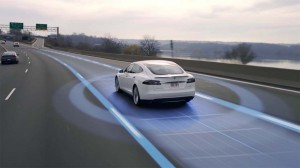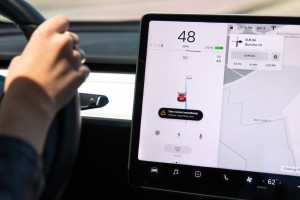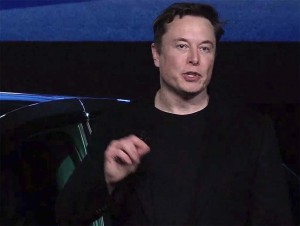It has been a tough few weeks for Tesla, the California electric carmaker watching its stock plummet in the wake of a sales slowdown, mounting losses and a report from the National Transportation Safety Board blaming the company’s Autopilot system for a fatal crash last March. Now, Consumer Reports is adding to Tesla’s grief.
CEO Elon Musk has spotlighted Autopilot as one of Tesla’s crown jewels, boasting about its increasingly hands-free capabilities, the latest being the ability to change lanes automatically. But the non-profit publication isn’t convinced, warning in a news release that “the latest version … is far less competent than a human driver.”
“The system’s role should be to help the driver, but the way this technology is deployed it’s the other way around,” said Jake Fisher, Consumer Reports’ senior director of auto testing. “It’s incredibly nearsighted. It doesn’t appear to react to brake lights or turn signals, it can’t anticipate what other drivers will do, and as a result, you constantly have to be one step ahead of it.”
First launched on the Tesla Model S in October 2014, Autopilot was initially billed as a virtually hands-free system – in one promotional image, Musk and his former wife were shown riding in the sedan with their hands out the window. The company took pains to lower expectations after Autopilot took blame for several crashes, including a fatal one in Florida in May 2016.
Tesla subsequently redesigned the system and has been steadily increasing its functions and capabilities, Musk now promising to soon roll out a fully autonomous version of Autopilot this year. A step in that direction, the new Navigate function, was enabled by an over-the-air software update last month. It is available to those who purchased vehicles equipped with Enhanced Autopilot or Full Self-Driving Capability.

The viability of Tesla's Autopilot is gaining acceptance with consumers as autonomous vehicle technology continues to be developed.
(Could Tesla’s high-flying ride on Wall Street be ready to come down? Click Here for the story.)
Navigate on Autopilot allows the vehicle to automatically change lanes, and it automatically is activated on those vehicles whenever a destination is plugged into the navigation system. Depending upon how a driver has the system set, the car can act automatically, without input, or first give the human behind the wheel an audible alert, and even a shake of the steering wheel.
But initial reactions have been mixed. CNET.com liked the way a prototype version functioned, when Tesla was originally going to require a driver approve the planned lane change. Now that this can be disabled, the editors were more wary, cautioning that “it’s still not a perfect system.”
Consumer Reports’ reaction was far more harsh. The Navigate on Autopilot driver-assist feature overpromises and under-delivers, with lives on the line,” David Friedman, the publication’s vice president of advocacy, said. “Tesla is showing what not to do on the path toward self-driving cars: release increasingly automated driving systems that aren’t vetted properly.”
The battery-electric carmaker isn’t the only one to raise concerns among safety and consumer advocates. With more and more manufacturers adding advanced driver assistance systems and semi-autonomous capabilities – and with many now testing fully autonomous vehicles — groups like California’s Consumer Watchdog have called for greater caution and more testing on test tracks, rather than on public roads.
The backlash to Navigate on Autopilot comes at a particularly tough time for Tesla. The company is struggling to boost sales and reduce financial losses. And Autopilot is one of the features it has promoted heavily as an advantage over more traditional competitors.
(Click Here for more about “hardcore” belt-tightening Tesla’s Musk says is a must.)
But Autopilot has already come under fire, critics pointing to a series of recent crashes that may be linked to the technology. That includes a March incident in Florida when a Model 3 drove under a semi-trailer, killing 50-year-old Jeremey Beren Banner.
The system was engaged 10 seconds before the collision, according to the NTSB, which also noted Banner did not have his hands on the wheel for the final eight seconds.
“Neither the preliminary data nor the videos indicate that the driver or the (Autopilot) executed evasive maneuvers,” the NTSB report said.
The March incident closely resembled the crash in May 2016 that killed a former Navy SEAL when his vehicle slammed into the side of a white trailer. Joshua Brown did not take control when the Autopilot system failed to distinguish the white truck from a bright Florida sky, the feds later determined.
Tesla has repeatedly advised drivers they must always maintain their hands on the wheel. But critics say the company is diluting the message by retaining the name, Autopilot, even more so, as CEO Musk continues to talk about the fully hands-free system he says is coming soon.
(NTSB ruling blames Tesla for fatal Autopilot crash, sending stock reeling. Click Here for more.)
The latest criticism from Consumer Reports, which has generally shown a favorable face to Tesla, could cause more headaches for the carmaker at a time when analysts and investors are sharply downgrading the stock and sales have been running at well below last year’s levels.


